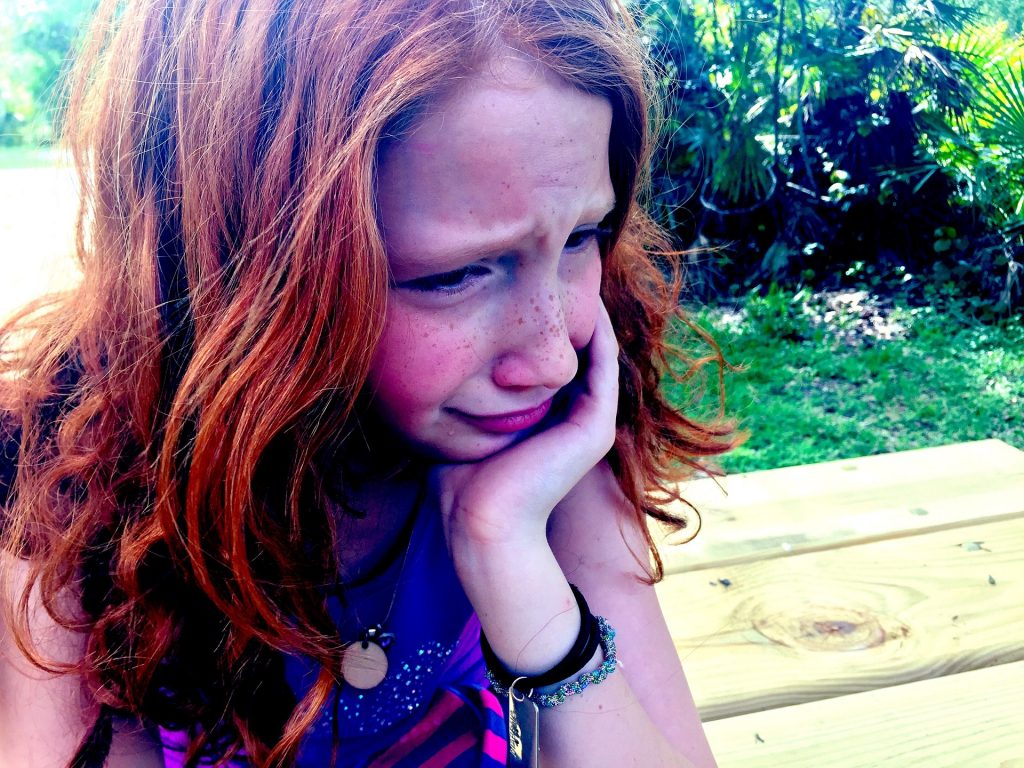Almost everyone has a fear of something, and that’s a good thing. Fear keeps us safe. But what about fears that actually stop us from enjoying life and moving ahead? As a parent, it can be difficult to discern if fear is protecting your child or holding him or her back.
What is Fear?
Fear is a normal human reaction. In fact, it’s an important survival instinct that can protect us from danger and prepare us to deal with it. Even babies are equipped with the instincts necessary to sense and respond to danger. Fear is an acute mental and physical reaction brought on suddenly by a dangerous event or unknown experience. The body gears up for flight or fight mode to protect us from what is happening, and the fear goes away when it’s over.
Read: How to Handle Common Childhood Fears
What is Anxiety?
While it is normal, even helpful to experience fear in dangerous situations, the distinction between fear and phobia usually involves a high level anxiety. Meaning, your child begins to anticipate, even imagine or greatly exaggerate a threat, without it actually happening. Again, many of us experience a natural level of anxiety from time to time. A healthy dose of anxiety can motivate us to do better or prepare our minds and bodies for a stressful encounter. However, too much anxiety can actually have the opposite effect. The panic can become paralyzing and prevent your child from doing well.
Read: How Does Cognitive Behavioral Therapy Work for Anxiety?
Fear vs. Phobia
A fear becomes a phobia when the anticipation, or anxiety, as well as the mental and physical response is so great that is it debilitating and interferes with everyday life. While phobias vary in their severity among children, the premise is the same: an intense and unreasonable fear triggered by the presence or anticipation of a specific situation, object or activity.
To a parent, your child’s level of fear will likely appear disproportionate to the proposed danger or harm. In fact, many individuals suffering from a phobia actually realize that the fear is irrational, but think they are powerless to control it. The physical and psychological stress is so intense that your child will do whatever they can to avoid contact with the object of his or her fear, and will often spend time worrying about potential encounters.
Children suffering from phobias quickly learn that avoidance can reduce their anxiety. The difficulty is that these avoidance behaviors must keep increasing and happening even sooner to provide the same relief. With a phobia, the avoidance and worry about potential encounters tends to grow bigger and interfere more with life over time.
Read: How to Help your Child Face Their Fear
When to Seek Help for Your Child’s Phobias
The phobias that require treatment are ones that interfere with life either frequently or dramatically. For example, a fear of spiders probably won’t keep your child from a normal life, but phobias that interfere with medical treatment, going to school or naturally occurring events, such as storms, cannot be avoided.
Like other anxiety disorders, treatment consists of thinking differently, facing the fear gradually and stopping any behavior that is reinforcing the fear. For a natural way to treat your child’s fear, anxiety and phobias, try our 10 Day Treatment Program. If you’re looking for a natural anxiety treatment for kids, our award-winning audio programs are developed by doctors and come with a money back guarantee.
